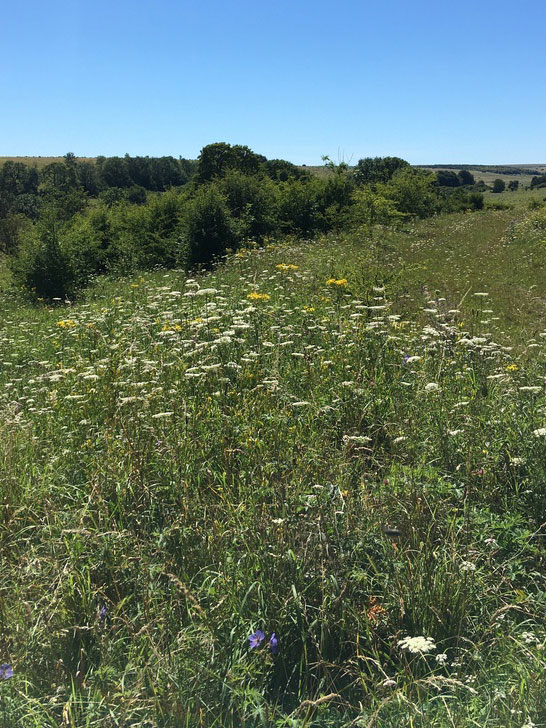
The Otterburn Ranges, a military range in Northumberland on the border with Scotland
Maintaining a wide variety of landscapes and terrains is essential to preserve the UK's ecosystems and redress the climate crisis. But it is also necessary for effective military training.
The MOD requires the armed forces to carry out exercises in as many real-life environments as possible across the UK's Defence Training Estate (DTE). Landmarc Support Services (Landmarc) works in partnership with the Defence Infrastructure Organisation (DIO) to provide the support services that enable our armed forces to live, work and train on the MOD's DTE.
Landmarc provides integrated training and sustainable infrastructure solutions. This includes consultancy, design, management and operation of training areas and ranges; explosives safety; built and rural estate management, including environmental and conservation support; information management and administration services; project management and commercial property management.
The DTE comprises a range of habitats, from peat-based upland moors to chalk grassland and coastal dunes. The estate includes:
-
169 sites of special scientific interest (SSSIs) or areas of special scientific interest (ASSIs)
-
22m trees
-
70,000ha of nature conservation sites
-
20,000ha of woodlands
-
1,600ha of wetlands.
Together, these cover around 1% of UK land area.
Redressing damage to ecosystems
The Ministry of Defence's Climate Change and Sustainability Strategic Approach sets out the principles and methods needed for UK defence to meet the challenge of climate change. It also details how defence must work to mitigate its impact through three related ambitions: adaptation and resilience; sustainability and net-zero carbon; and global leadership.
Landmarc works closely with the DIO to minimise the environmental impact of military training while ensuring the armed forces have safe places to train. Landmarc has been sustainably felling ash trees to prevent the spread of diseases such as ash dieback, as well as encouraging the natural regeneration and planting of a wide range of native species. All felled wood is either left on site to provide deadwood habitats to help maintain current flora, sold on or turned into biomass. The sustainable management of existing woodlands and planting of new ones is helping to mitigate climate change. We also need to develop natural capital and climate resilience initiatives across the estate.
However, the protection and restoration of peatlands could be even more effective. Many remaining peatlands are legally protected given their importance in nature conservation. They are home to species such as the bog orchid, and large and small-leaved insectivorous sundews. It also provides habitat for the large heath butterfly, whose caterpillars feed almost exclusively on the hare's tail cotton grass unique to peat bogs.


Carbon sequestration and peat bogs
Peat is formed in cool, waterlogged, acidic environments from vegetation adapted to these harsh conditions. This includes various species of sphagnum moss, which is eventually compressed by water and dead plants. Its slow rate of decay traps carbon in the plants and locks it into the ground. It takes a century for 10cm of peat to form. Although peatlands only cover 3% of the Earth’s surface, they hold almost 30% of carbon in its soil.
It is no coincidence that parts of the defence estate include significant areas of peatland as the UK supports 13% of such habitat in the world. Historically, realistic and safe military training, particularly where live firing occurs from various weapons systems and large combined exercises requires large areas of sparsely populated land. So, for instance, Sennybridge, Otterburn, Leek, Dartmoor and Catterick training camps were acquired in remote uplands. With them came responsibility for these unique habitats.
Peat bogs also had a military function in that sphagnum moss is absorbent and mildly antiseptic. It was for instance collected in vast quantities, dried and sent to the Western Front during the First World War for use as field dressings.
But the peatlands we now recognise as vital habitats that effectively sequester carbon have been severely degraded, particularly over the past century. Traditional uses such as cutting and drying peat for domestic fuel use will have had little lasting impact. However, large-scale drainage for commercial forestry and livestock grazing was common throughout the 1950s and 1960s. This led to the loss and degradation of significant areas, releasing previously locked-up carbon into the atmosphere.
All is not lost, though. DIO is carrying out extensive studies to understand the nature and extent of peatlands on the estate. This will lead to a series of projects designed to reverse the drying out of peatland. This in turn will trigger natural peat formation processes, and will begin to lock up carbon once again. Projects have already started including the blocking of drainage ditches on peat bogs at Otterburn in Northumberland and others are in development.
Landmarc works in partnership with the DIO to block drainage ditches, reintroduce natural vegetation and reduce overgrazing. This will help to restore peatlands as wildlife habitats and contribute to the fight against climate change.
Duncan Glen is rural estate and natural capital manager at Landmarc Support Services
Contact Duncan: Email | Twitter
Related competences include: Geographic Information Systems (GIS), Management of the natural environment, Surveying and mapping
